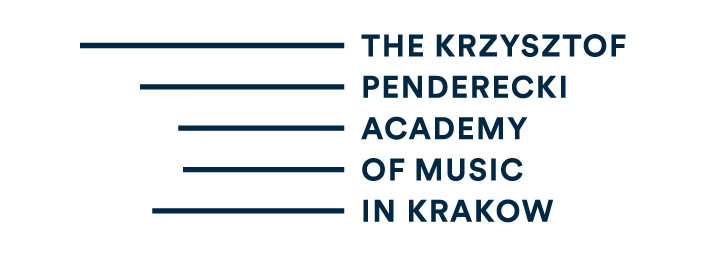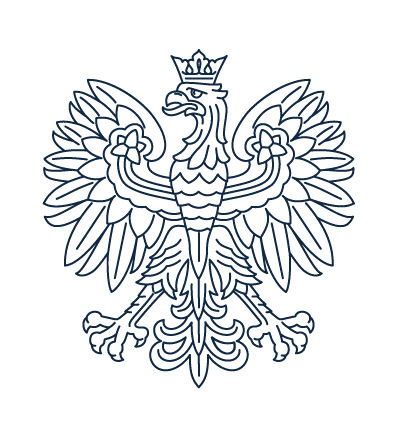DETAILED PROGRAMME (REPERTOIRE) REQUIREMENTS
DETAILED REQUIREMENTS
FOR THE GRADUATE (MASTER’S DEGREE) PROGRAMME
A two-stage examination; candidates who have passed the first stage are admitted to the second stage.
Stage 1: Major exam
an examination in playing an instrument – practical
Stage 2: Supplementary exam
interview – an oral examination
Programmes:
Playing the harpsichord
• one piece from the 16th or 17th century (e.g. the English Virginalists, J.J. Froberger or G. Frescobaldi)
• any movement from a 17th- or 18th-century French suite;
• a chosen piece by J.S. Bach;
• a free-choice piece.
The programme (approx. 30 minutes) may be performed on the harpsichord from memory or from sheet music.
In addition: The candidate will be given 30 minutes to prepare and perform, with a basso continuo instrumentalist provided by the Academy, up to two contrasting movements taken from 18th-century sonatas in Italian, French or German style with uncomplicated figuring.
Playing the historical piano
A free-choice varied programme for candidates taking a piano or historical piano exam should include:
• at least one complete classical sonata;
• another form, e.g. a fantasia or a variation cycle.
The programme (approx. 30 minutes) may be performed from memory or from sheet music.
It is compulsory to perform at least one item from the whole programme on a historical piano.
Playing the lute
A candidate should perform the programme on a historical instrument – any of the following: the renaissance or baroque lute, renaissance or baroque guitar, archlute, theorbo/chitarrone.
- The candidate should present a programme with the renaissance or baroque repertoire, applicable for the chosen instrument (playing on more than one instrument is not required).
The programme (approx. 25 minutes) may be performed from memory or from sheet music.
Playing the baroque violin
The candidate should perform the programme on the baroque violin.
• a chosen sonata, suite or fantasia from the 17th century;
• two contrasting movements of an 18th-century piece for solo violin (e.g. J.S. Bach, J. Roman, G.Ph. Telemann);
• one 18th-century piece with the harpsichord accompaniment;
• a free-choice piece.
The programme (approx. 30 minutes) may be performed from memory or from sheet music.
Playing the baroque cello
The candidate may perform the programme on a baroque or modern instrument.
Programme (repertoire) for candidates taking a baroque cello exam:
• a 17th-century piece solo or with basso continuo;
• J.S. Bach – two free-choice movements from one of the suites for solo cello;
• an 18th-century sonata by one of the French composers;
• an 18th-century piece of any form.
The programme (approx. 30 minutes) may be performed from memory or from sheet music.
Programme (repertoire) for candidates taking a modern cello exam:
• J.S. Bach – any three movements from one of the suites for cello solo;
• a sonata from the baroque or early classical period (J.B. Bréval, L. Boccherini, J. Duport);
• any piece (or pieces or movements from a piece) chosen by the candidate.
The programme (approx. 30 minutes) may be performed from memory or from sheet music.
Playing the viola da gamba
The programme should include original works for viola da gamba solo and with accompaniment. The character of the pieces should be varied. The programme should include:
• a piece based on the variation technique;
• a baroque suite by a French composer;
• a piece by a German composer;
• a free-choice piece or pieces.
The programme (approx. 30 minutes) may be performed from memory or from sheet music.
Playing the violone
The candidate may perform the programme on the violone, viola da gamba, baroque or modern cello or double bass.
Programme (repertoire) for candidates taking a violone, viola da gamba, baroque or modern cello exam:
• two 17th-century Italian diminutions for bass instrument;
• a free-choice piece or pieces;
• basso continuo of two arias from J.S. Bach’s cantatas (BWV 7/2 and 62/4) for bass solo and basso continuo with a soloist provided by the Academy and the harpsichord accompaniment.
Programme (repertoire) for candidates taking a double bass exam:
• two ricercars by D. Ortiz for bass instrument;
• a free-choice piece or pieces;
• basso continuo of two arias from J.S. Bach’s cantatas (BWV 7/2 and 62/4) for bass solo and basso continuo with a soloist provided by the Academy and the harpsichord accompaniment.
The programme (approx. 30 minutes) may be performed from memory or from sheet music.
Playing the transverse flute
A candidate should perform the programme on the transverse flute.
• J. Hotteterre le Romain – selected suite from Book 1 or 2 of Pièces pour la flûte traversière;
• a fantasia by G.Ph. Telemann;
• any flute sonata from German or Italian music of the 18th century.
The programme (approx. 30 minutes) may be performed from memory or from sheet music.
Playing the recorder
The candidate should perform the programme on the recorder.
• a chosen 17th- or 18th-century piece with basso continuo accompaniment;
• two contrasting parts of a concerto (e.g. by A. Vivaldi, G. Telemann, J.F. Fasch, Ch. Graupner);
• a piece composed after 1960, containing extended recorder techniques (e.g. M. Shinohara: Fragmente, R. Hirose: Meditation, W. Jeths: The Conspiracy of CC).
The programme (approx. 30 minutes) may be performed from memory or from sheet music.
Playing the baroque oboe
The candidate should perform the programme on the baroque oboe.
• two contrasting movements from a sonata from Italian music;
• two contrasting movements from a sonata or suite from French music;
• first movement of a concerto for oboe by an 18th-century composer;
• a free-choice piece or pieces.
The programme (approx. 30 minutes) may be performed from memory or from sheet music.
Playing the natural trumpet
• two movements of a baroque or classical concerto, or a baroque sonata;
• selected movements from a baroque suite.
The programme has to be performed on historical trumpets or modern trumpets in B, C, Es (E-flat). The programme may be performed from memory or from sheet music.






